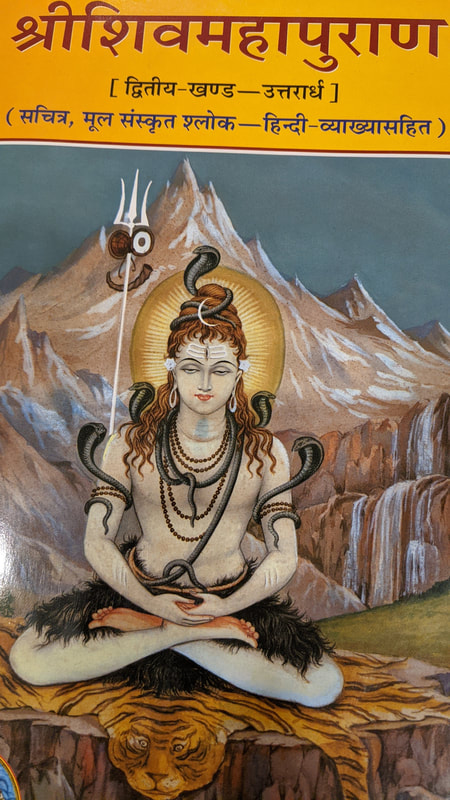|
The Glory of Shiva Mahapurana
The Shiva Mahapurana, one of the eighteen Puranas is the greatest and the noblest of the sacred lore. It is the form of Shiva and as such is to be served and realized in this world. By reading this and listening to it the good man becomes very pious. Loving care to listen to it yields all desired results. By listening to this Purana of Shiva a man becomes sinless. After enjoying all extensive worldly pleasures, he will attain the region of Shiva. The Shiva Mahapurana contains chapters with Shiva-cantered cosmology, the stories of Sadashiv, the relationship between gods, ethics, Yoga, Tirtha (pilgrimage) sites, bhakti, rivers and geography, and other topics. Glory of Shiva Purana: The Shiva Purana talks about how the Supreme Being as Shiva created the universe and incarnated in various ages to spread righteousness, knowledge, and devotion among humanity. By understanding the mysteries of Shiv Mahapurana and singing its praises, a man attains greater virtues than that which could be attained by being charitable or by the performance of all the `yagnas'. Contemplating on the subject matters of Shivmahapuran give auspicious fruits just like a 'Kalpa-taru' (A tree which fulfils all the wishes). Benefits of Reading or listening Shiva Purana:
Precautions for reading or listening Shiva Purana:
Contents of Shiva Purana: The Puranas were first compiled by Brahma. Sanat kumara, a son of Brahma inherited them from his father and imparted them to Vyasa who in turn abridged them in 18 compendiums. The Shiva Purana originally, contains 100,000 shlokas and 12 Samhitas – Vidheshvara (10,000). Rudra (8,000), Vinayaka (8,000), uma (8,000), matr (8,000), ekadashrudra (13,000), Kailash (6,000), shatrudra (3,000), kotirudra (9,000), sahaskotirudra (11,000), vayviya (4,000) and Dharma (12,000). But Mehrishi Vyasa abridged it into 24,000 shlokas and 7 Samhitas (Vidhyeshvar. Rudra, shatrudra, kotirudra, Uma, Kailash and vayviya). Shiva Purana contains the exposition made of Suta ji on the inquiry made by sages. The various Samhitas or sections of Shiv Purana are as under:
A number of articles will be published on the various contents of Shiva Mahapurana in due course.
0 Comments
|
Archives
July 2024
Categories |

 RSS Feed
RSS Feed